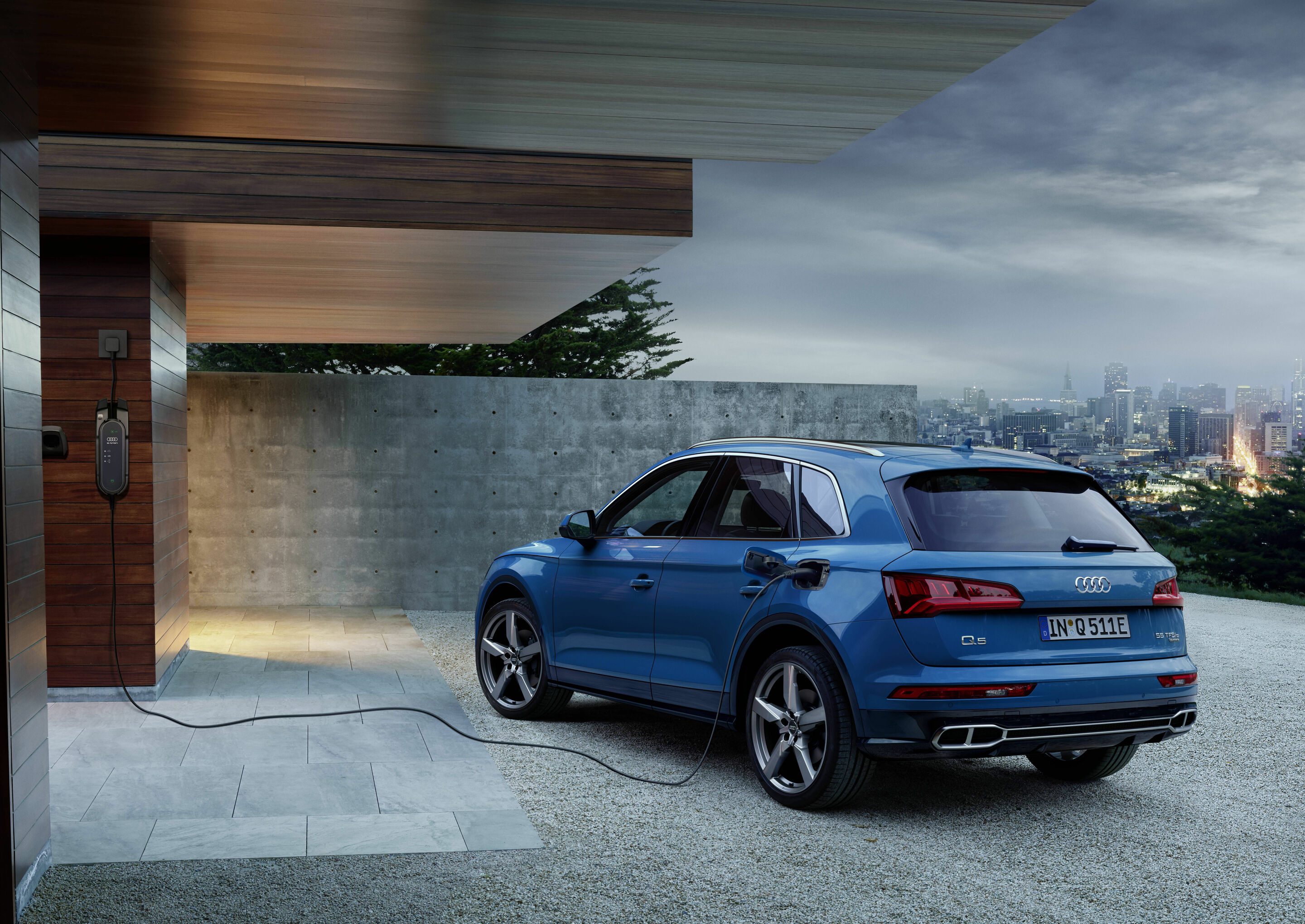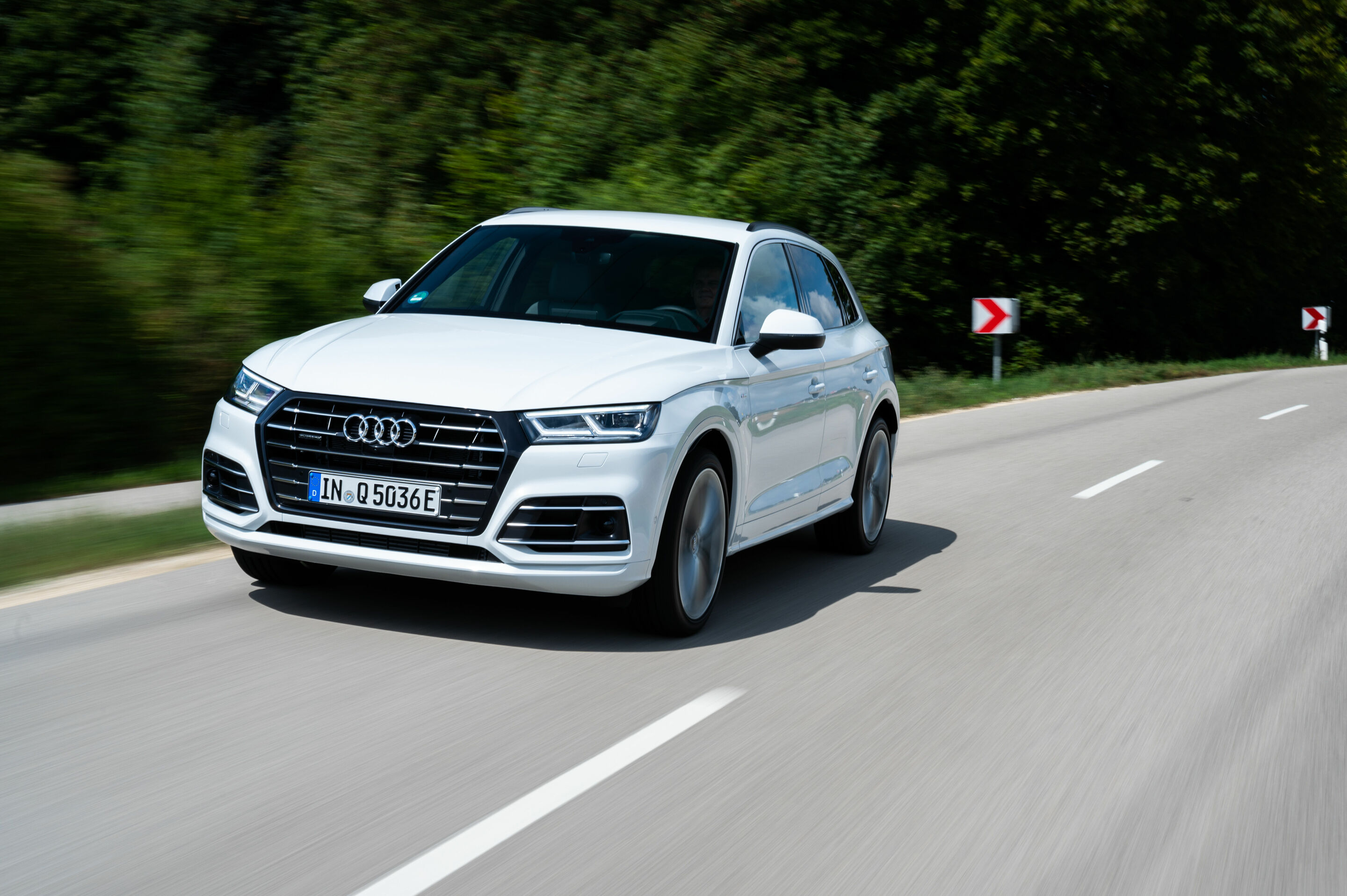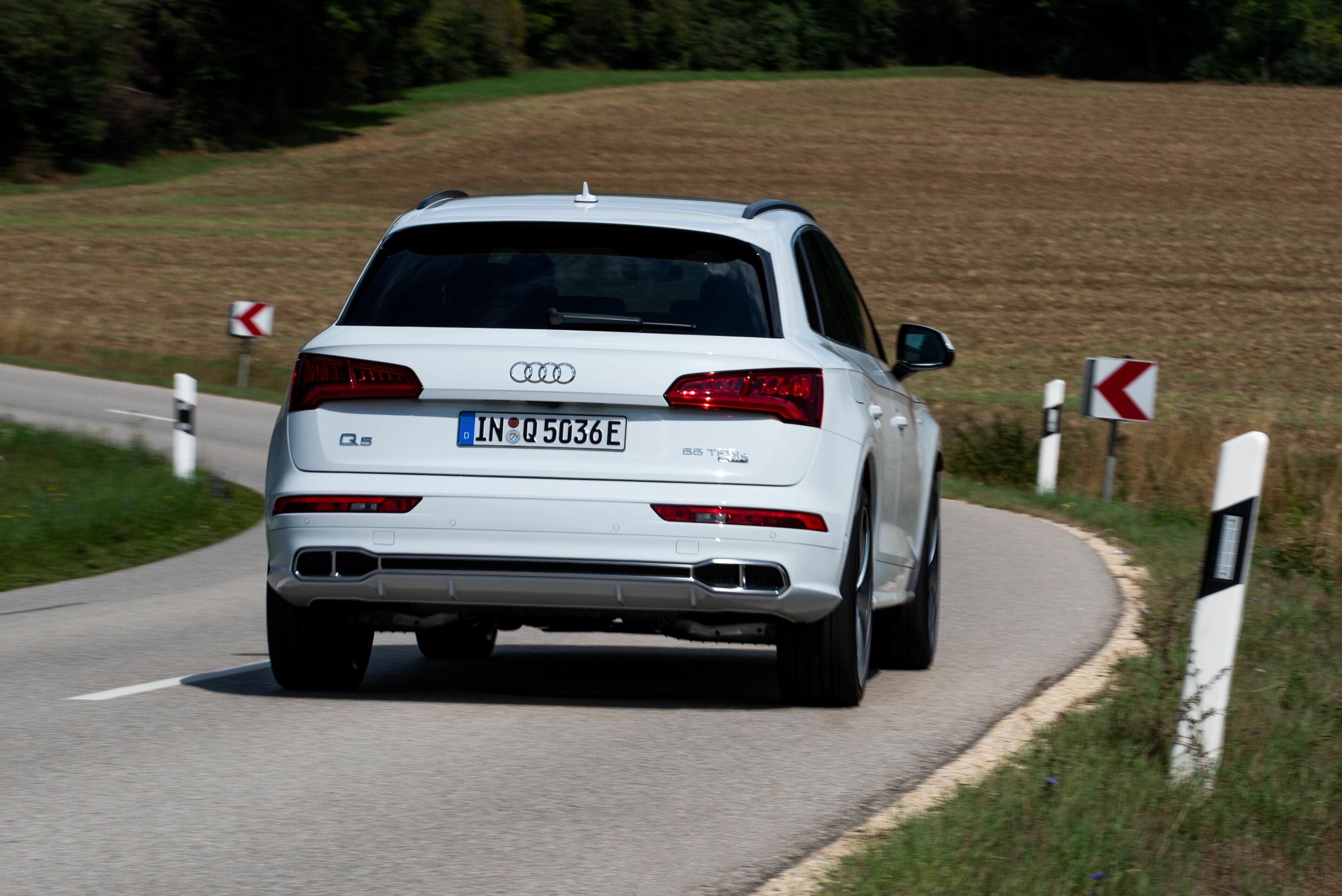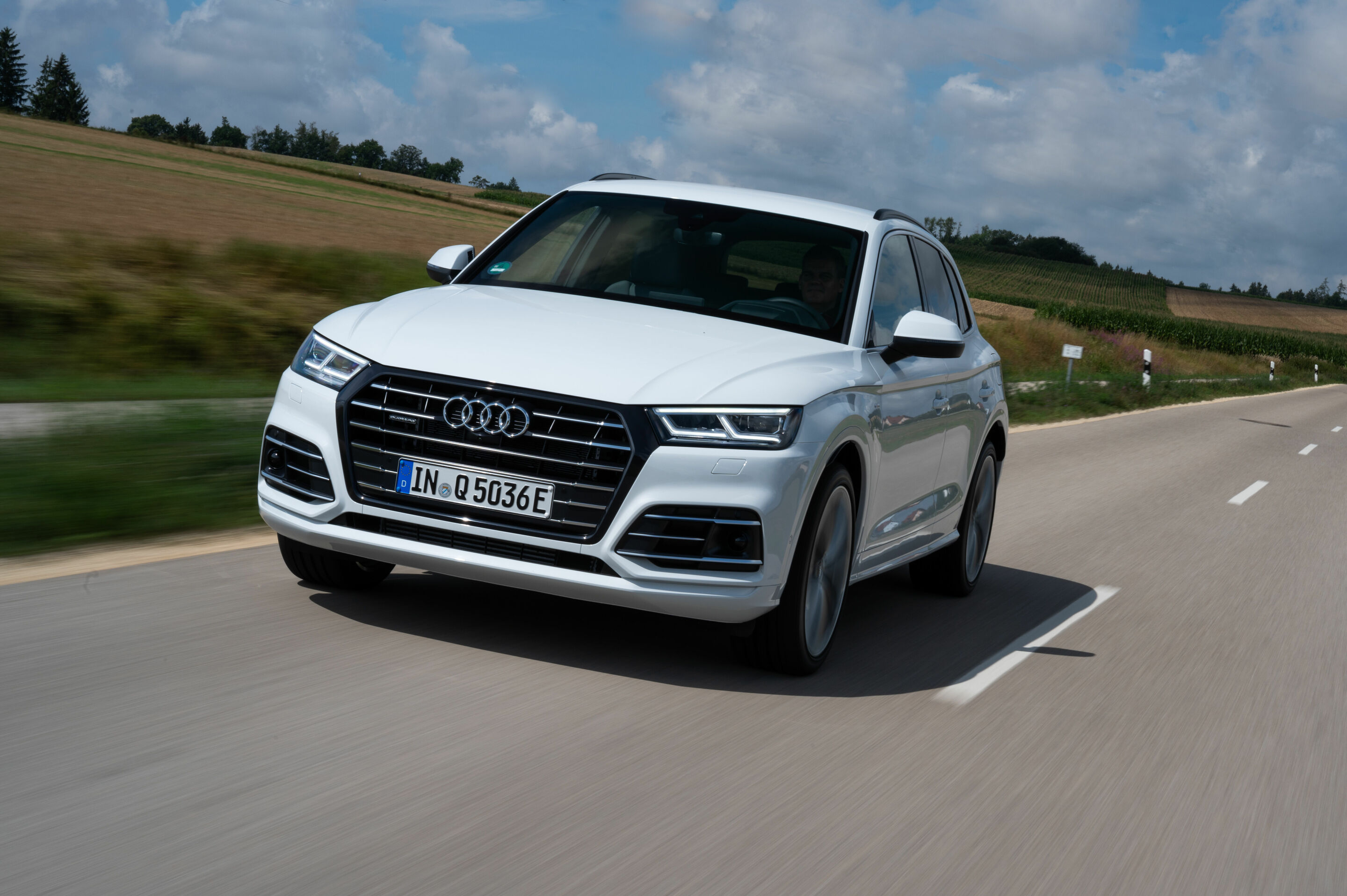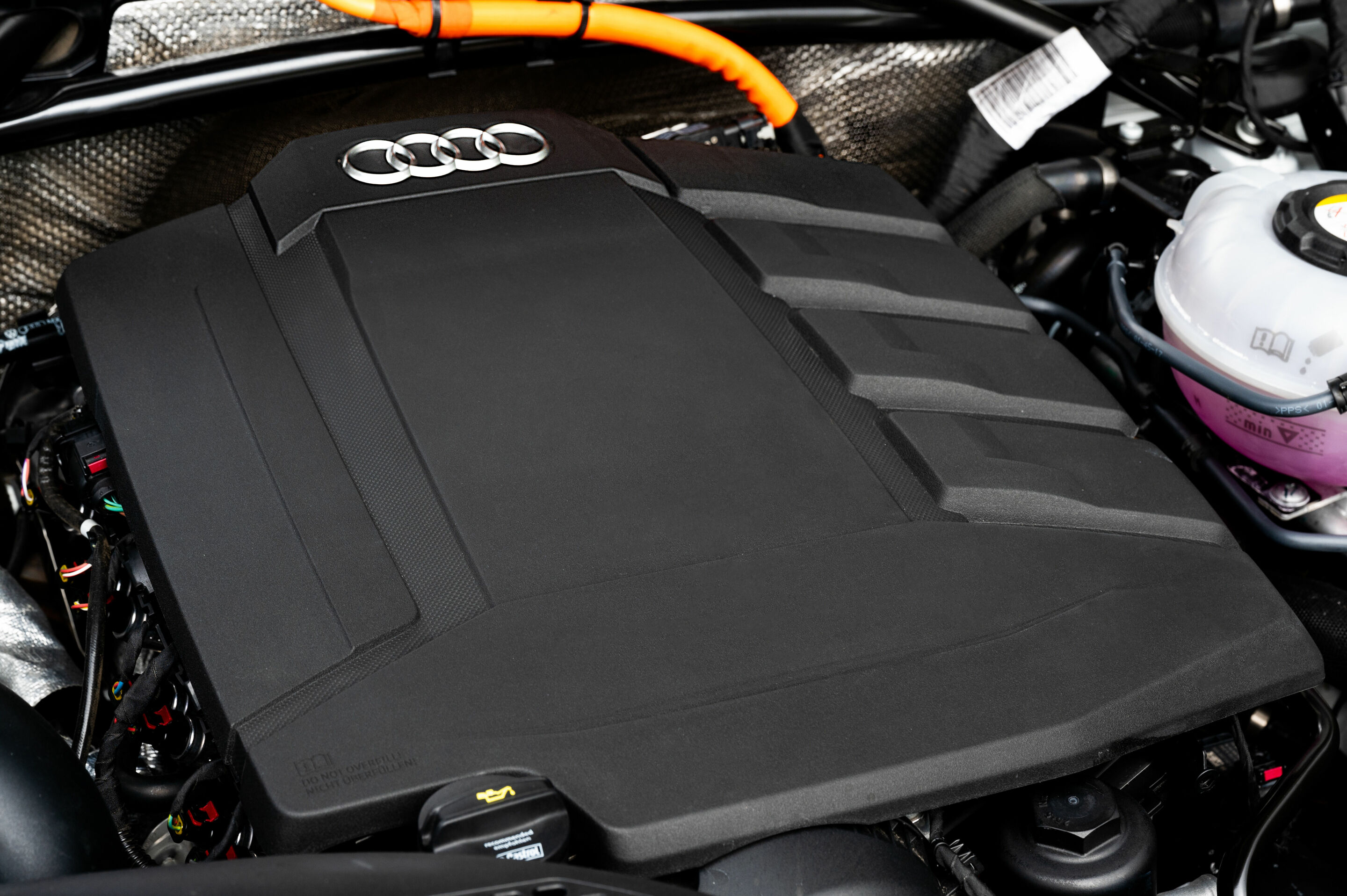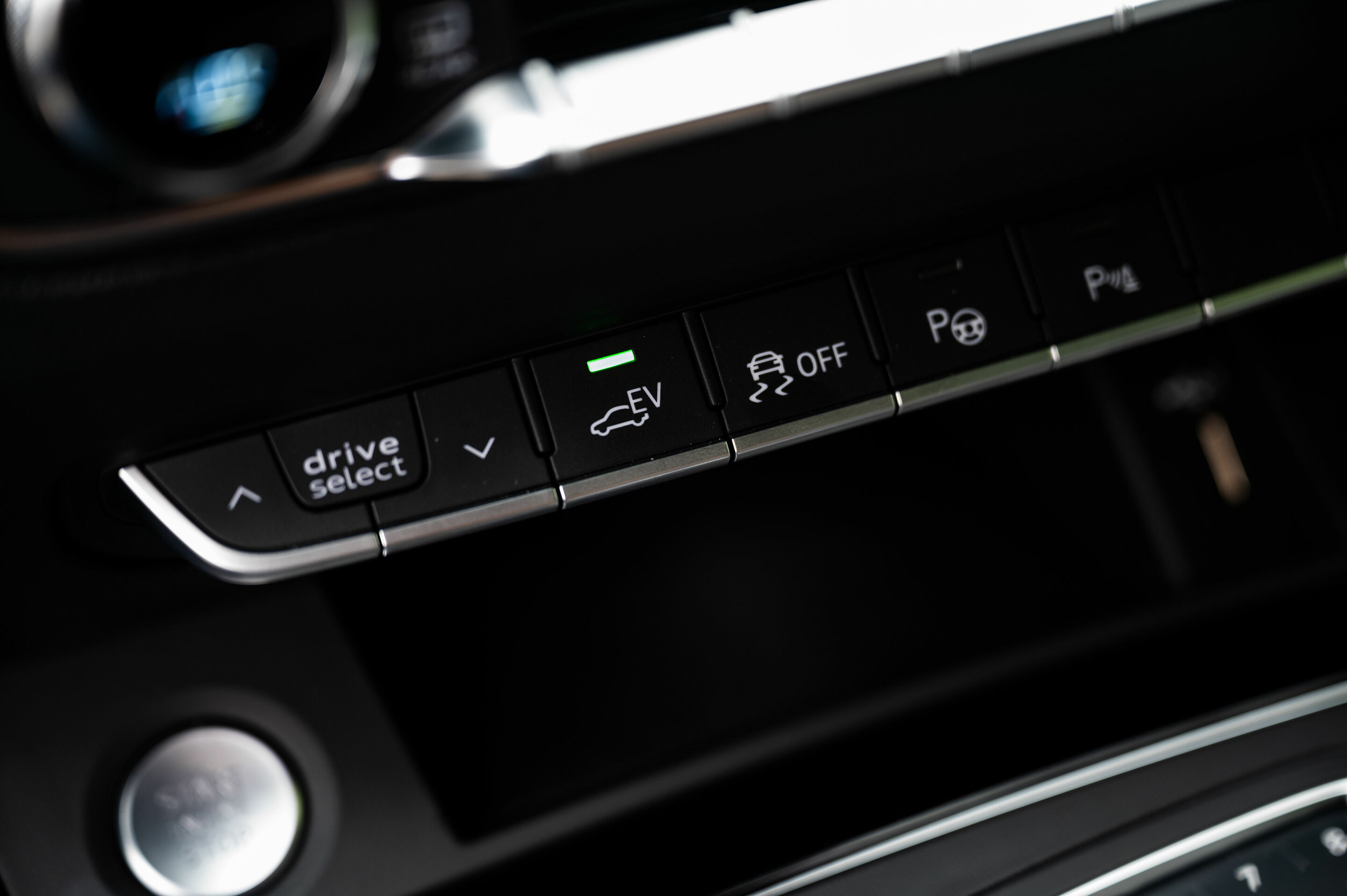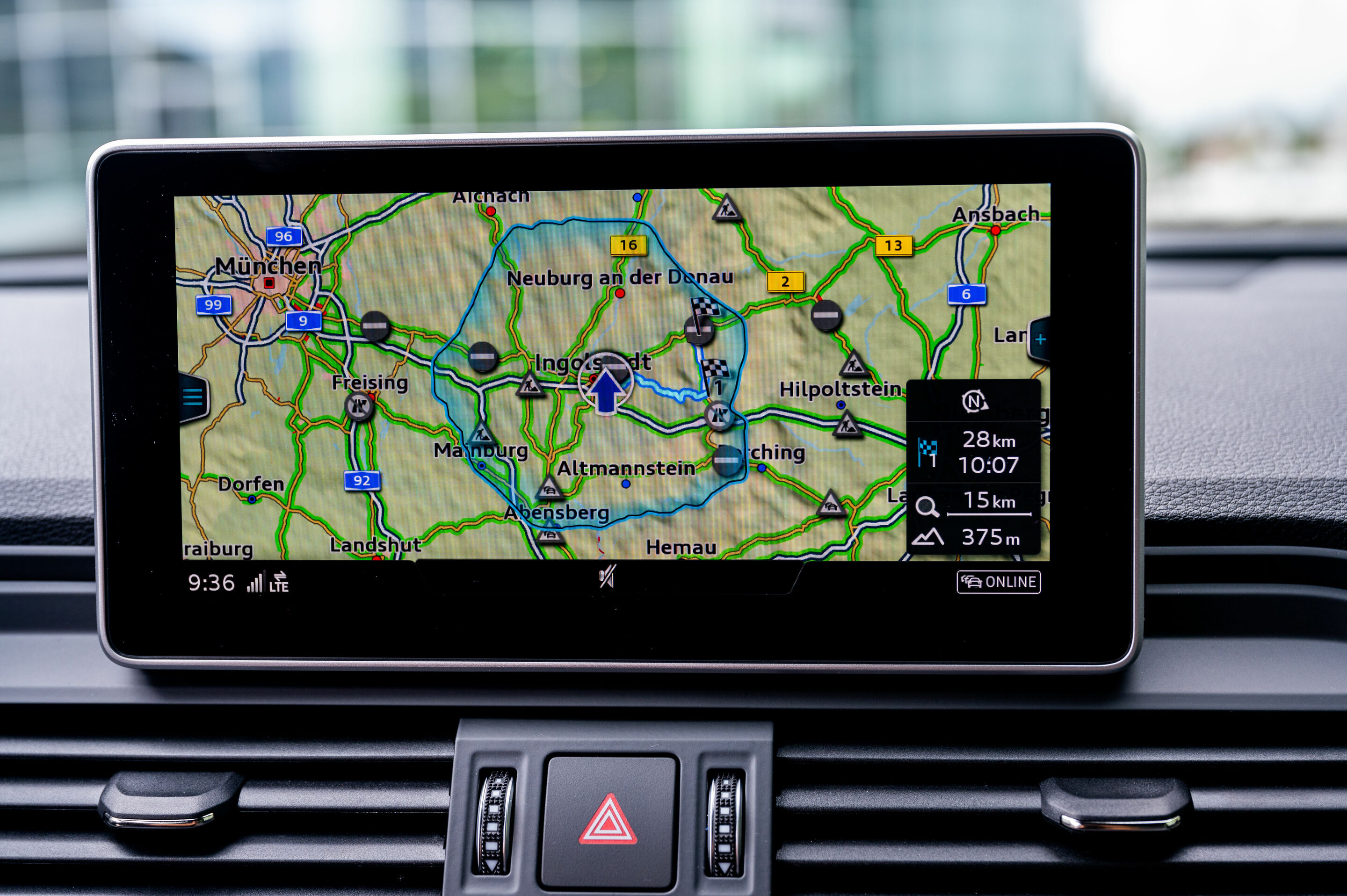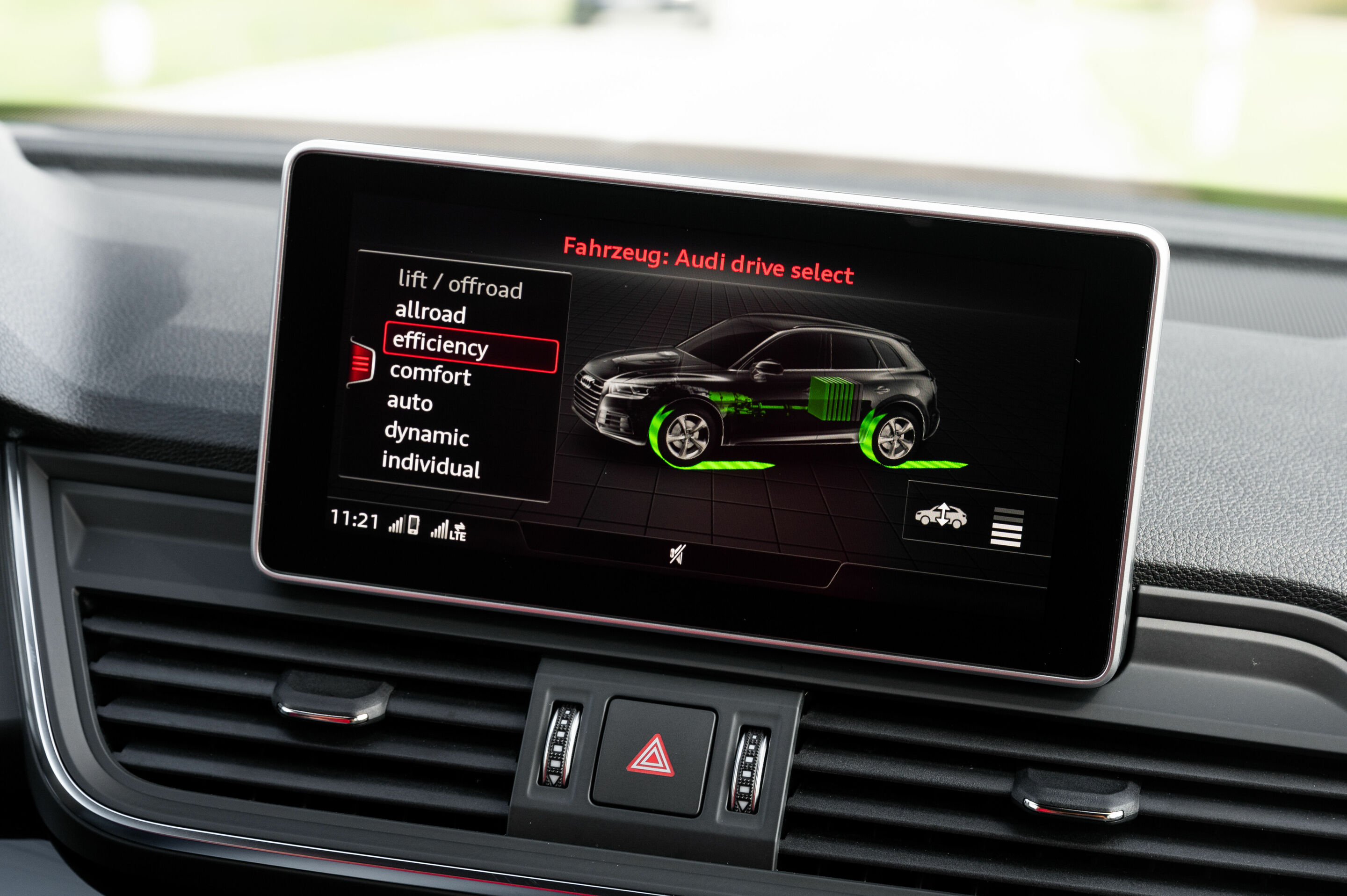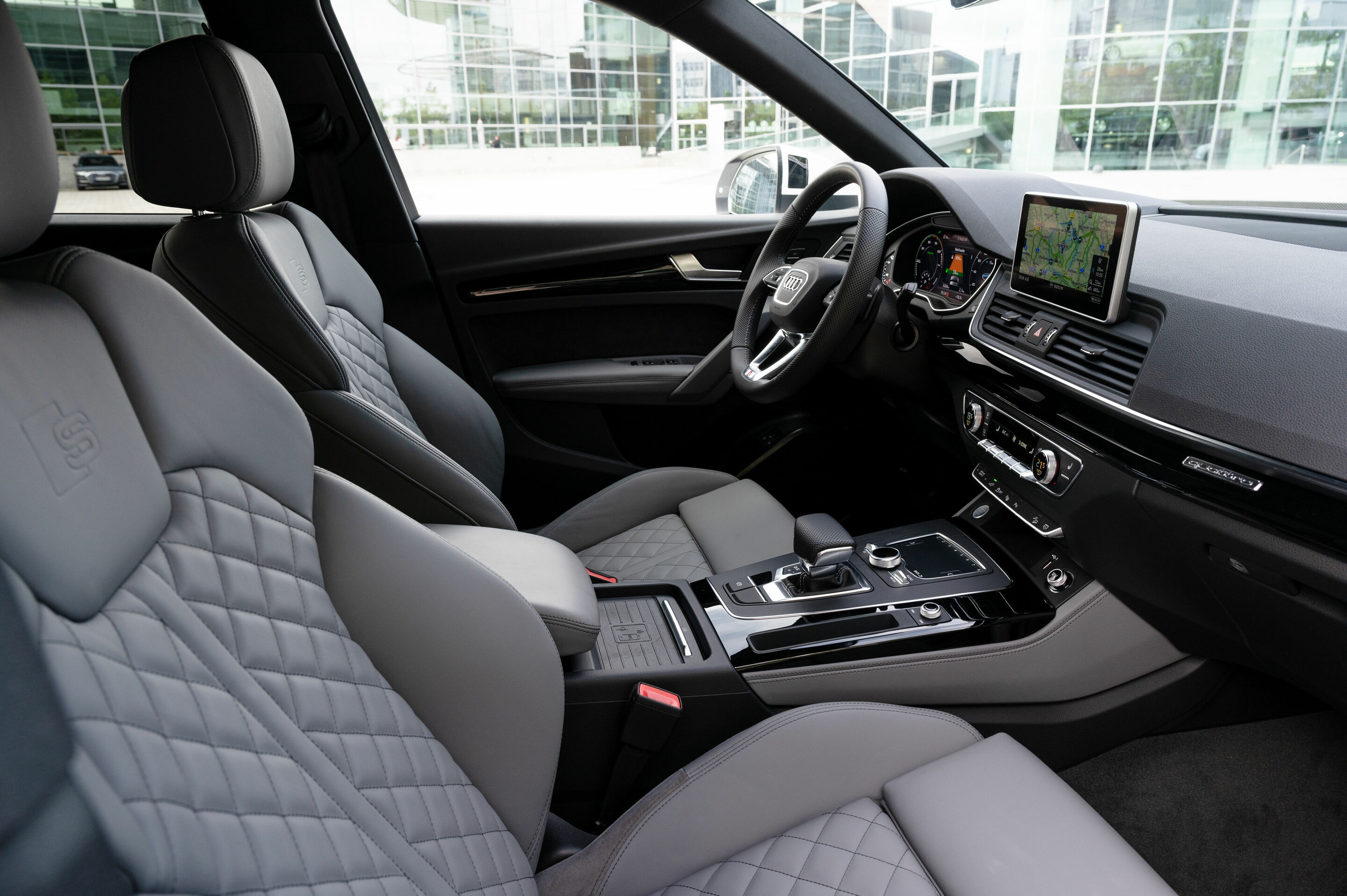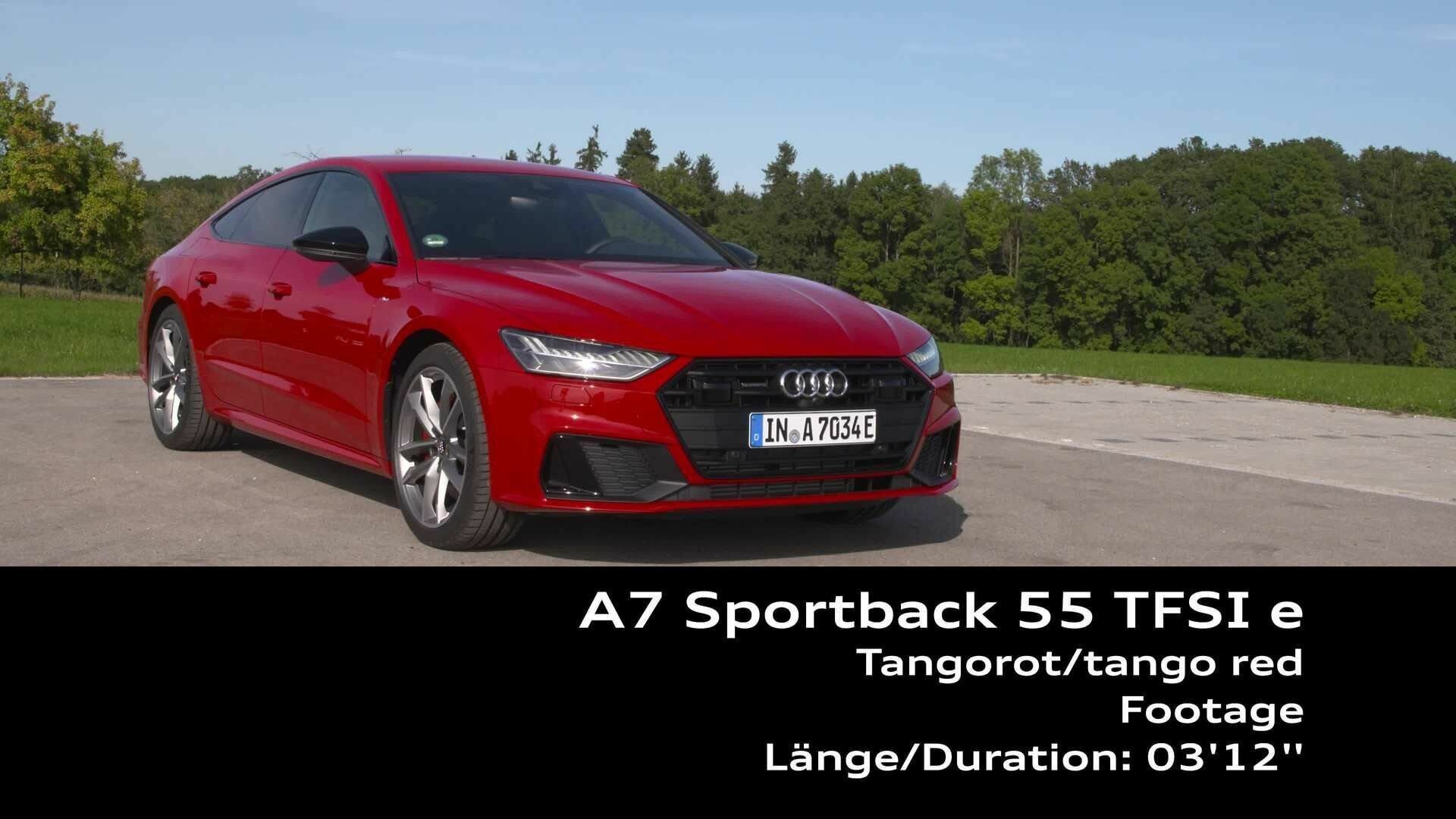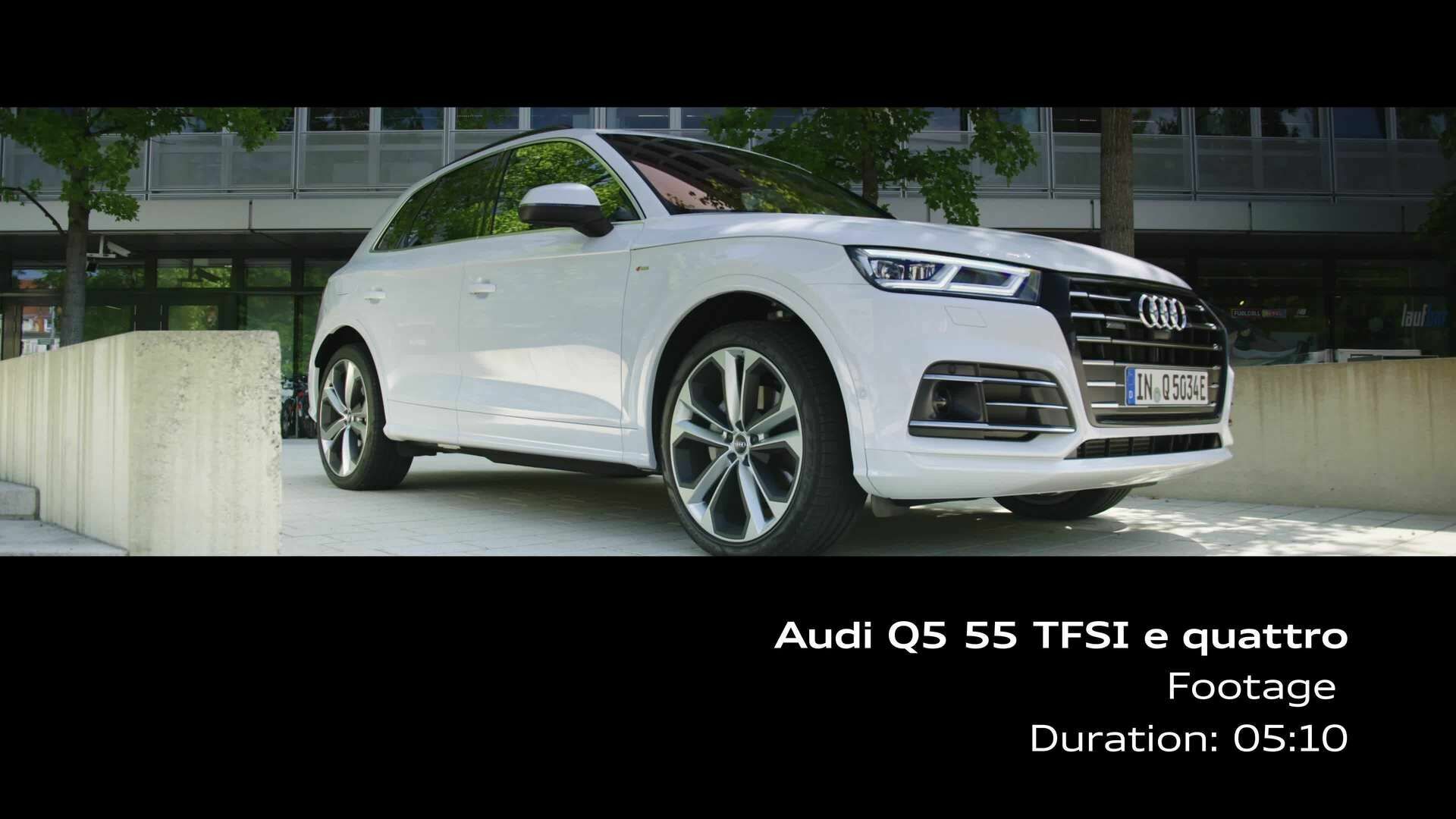Sporty and efficient with plug-in hybrid drive:
the Audi Q5 55 TFSI e quattro
- Successful SUV now with TFSI engine and powerful electric motor
- Electric range of over 40 kilometers (24.9 mi), electric driving at up to 135 km/h (83.9 mph)
- Convenient charging: the Audi e-tron Charging Service and the myAudi app
- With an E license plate, ideal for commuters, fleet operators and as a company car
The Audi Q5 55 TFSI e quattro with 270 kW (367 hp) system output (combined fuel consumption: 2.4 – 2.1 l/100 km*; combined CO2 emissions: 53 – 46 g/km*) is the first of the new plug-in models from Audi. The drive concept comprises a combustion engine and an electric motor with intelligent controller, enabling it to cover most everyday driving distances electrically. The WLTP all-electric range is more than 40 kilometers (25.9 mi). With the E license plate under the German Electric Mobility Act, owners also enjoy tax advantages and municipal traffic privileges.
The new drive concept comprises a 2.0 TFSI, a four-cylinder, turbocharged gasoline engine producing 185 kW (252 hp) and 370 Nm (272.9 lb-ft) of torque, and an electric motor (combined fuel consumption: 2.4 – 2.1 l/100 km* (98.0 – 112.0 US mpg); combined CO2 emissions: 53 – 46 g/km* (85.3 – 74.0 g/mi)). The permanently excited synchronous motor (PSM) has a peak output of 105 kW and peak torque of 350 Nm (258.1 lb-ft). It and the separating clutch are integrated into the seven-speed S tronic, which uses ultra technology to transfer the drive torque to the quattro drivetrain. The hybrid SUV impresses with a system output of 270 kW (367 hp) and total torque of 500 Nm (368.8 lb-ft) just above idle, namely from 1,250 rpm. Acceleration from 0 to 100 km/h (62.1 mph) takes 5.3 seconds; top speed is 239 km/h (148.5 mph). According to the standard for plug-in hybrid vehicles, fuel consumption ranges from 2.4 – 2.1 l/100 km (98.0 – 112.0 US mpg), corresponding to 53 – 46 grams CO2 per kilometer (85.3 – 74.0 g/mi). Its electric range in the WLTP cycle is more than 40 kilometers (25.9 mi). Top speed in electric mode is 135 km/h (83.9 mph), enough even for highway driving.
The SUV’s lithium-ion battery is located under the luggage compartment floor. It is made up of 104 prismatic cells and stores 14.1 kWh of energy with a voltage of 381 volts. For optimal temperature control, its cooling loop is connected to both the coolant loop for the climate control system and the low-temperature cooling loop into which the electric motor and power electronics are also integrated. The climate control system uses a highly efficient heat pump that pools the waste heat from the high-voltage components. With 1 kW of electrical energy, it can generate up to 3 kW of thermal heating output. That makes the car more efficient and also provides a more comfortable climate for the occupants.
quattro permanent all-wheel drive with ultra technology
The Q5 55 TFSI e marks the first time that the efficiency-optimized all-wheel drive with ultra technology is used in combination with an electric motor. The all-wheel drive system’s intelligent control works predictively, always looking ahead by means of sensors and the continuous analysis of the data collected on driving dynamics and driver behavior. The quattro all-wheel drive system is thus always ready when needed. At low loads and a sufficient coefficient of friction between the wheels and the road surface, the transmission of power to the rear wheels is deactivated. The drivetrain then functions with high efficiency as a front-wheel drive system. All-wheel drive is deactivated whenever it is not needed, but it remains available at all times. Fast, automatic activation of the all-wheel drive system follows a three-stage strategy: proactive, predictive and reactive. By networking quattro drive with Audi drive select, drivers can adjust not just the character of the engine, but also the all-wheel-drive properties to suit their individual preferences.
Driver modes and the updated predictive efficiency assistant
Particularly quiet and with zero local emissions in the city, with high range on long-distance trips or sportily dynamic with the combined power of the combustion engine and the electric motor: the Audi Q5 55 TFSI e quattro** intelligently manages a number of versatile drive modes. The concept is designed so that customers can do the lion’s share of their daily driving electrically.
The predictive efficiency assistant (PEA) adjusts coasting recuperation behavior to the situation at hand. It uses the predictive route data from the navigation database and monitors the distance to the vehicle ahead using signals from the camera and radar. Depending on the situation, the system chooses predictively between freewheeling with the engine switched off and coasting recuperation, i.e. the recovery of kinetic energy and its conversion into electrical energy.
When the adaptive cruise control (ACC) is active, the PEA supports the driver by automatically braking and accelerating with the aim of enhancing efficiency and comfort. If the driver is driving without ACC, however, a haptic signal from the active accelerator pedal and a visual signal in the cockpit and head-up display indicate the proper time to let off the accelerator to use as much kinetic energy as possible. At the same time, symbols in the cockpit indicate the reason for the reduction in speed. There are indicators for: speed limits, town signs, curves and downhill slopes, traffic circles, intersections, highway exits and traffic ahead.
The driver is free to choose whether and how to intervene in the interplay between engine and motor. There are three driving modes from which to choose:
Hybrid mode is activated automatically together with route guidance in the navigation system. It can also be activated manually using the Mode button. In this mode, the battery charge is optimally distributed over the route to reduce fuel consumption, with primarily electric driving in urban areas and stop-and-go traffic. The system chooses between freewheeling with the engine switched off and coasting recuperation. Coasting recuperation can recover up to 25 kW of power. The electric motor is responsible for all light braking up to 0.1 g, i.e. the majority of braking in everyday driving. A maximum of 80 kW of electrical energy are generated via braking recuperation at a deceleration of up to 0.2 g. The disc brakes are used for more power deceleration. If route guidance is active in the MMI navigation system, the predictive operating strategy attempts to drive the last urban segment of the route all-electrically and arrive at the destination with the drive battery nearly empty. The control function is based on a large amount of data. These include online traffic information, distance to the destination, the route profile of the chosen route, precise information about immediate surroundings from the navigation data, such as speed limits, types of roads, uphill and downhill slopes and the latest data from the onboard sensors.
Besides Hybrid mode, the driver can also choose between EV and Battery Hold modes. In EV mode, the car is driven exclusively electrically as long as the driver does not depress the accelerator past a variable, perceptible pressure point. EV mode is the base setting each time the vehicle is started. In Battery Hold mode, battery capacity is held at the current level.
Individual: equipment and design
The Audi Q5 55 TFSI e combines with generous list of standard equipment. LED headlights, sport seats, three-zone automatic climate control, convenience key, DIS with color display, PHEV-specific displays and 18-inch wheels in a five-arm turbine design are standard. The rear seats can be shifted longitudinally and their seat back angle adjusted. Sporty details from the S line exterior package hone the dynamic look: S line bumpers front and rear, a diffuser with a double clasp at the rear and a unique design in the Singleframe grille with various elements in dark chrome.
Convenient: fast charging in just a few hours
The Audi Q5 55 TFSI e quattro comes standard with the Compact charging system plus a Mode 3 cable with Type 2 plug for use at public charging stations. The Compact charging system comprises cables for household and industrial outlets plus a control unit. The system features an LED status display and safety functions such as temperature and residual current monitoring. Audi also offers the optional wall-mounted holder clip, a lockable holder for the charging system. A full charge at a CEE industrial outlet with 400 V/16 A takes just 2.5 hours. The integrated charger charges the lithium ion battery with a maximum power of 7.4 kW. But even at a 230 V household outlet, an empty battery can be fully and conveniently recharged overnight in roughly seven hours. Convenient recharging is also possible on the road. The proprietary Audi e-tron Charging Service provides access to some 100,000 charging points in Europe. A single card is sufficient to start charging, regardless of the provider.
Charge management from the couch: the myAudi app
The myAudi app allows customers to use the services from the Audi connect portfolio on their smartphones, which is particularly practical with electrified models. The app can be used to check the battery and range status, start the charging process, program the charge timer and view the charge and consumption statistics. Furthermore, the route planners in both the app and the MMI navigation in the car show charging stations.
Another function of the myAudi app is preheating/precooling prior to departure. In this case the climate control system compressor and the auxiliary heater in the car are powered electrically. The customer can determine exactly how the interior should be heated or cooled while the battery is being charged. Depending on the optional equipment chosen, the same applies to the seat and steering wheel heating, heating of the windshield, rear window and mirrors, and the seat cooling.
Orders are now being accepted for the Audi Q5 55 TFSI e quattro at a base price in Germany of 60,450 euros. Market introduction begins in the third quarter of 2019.
